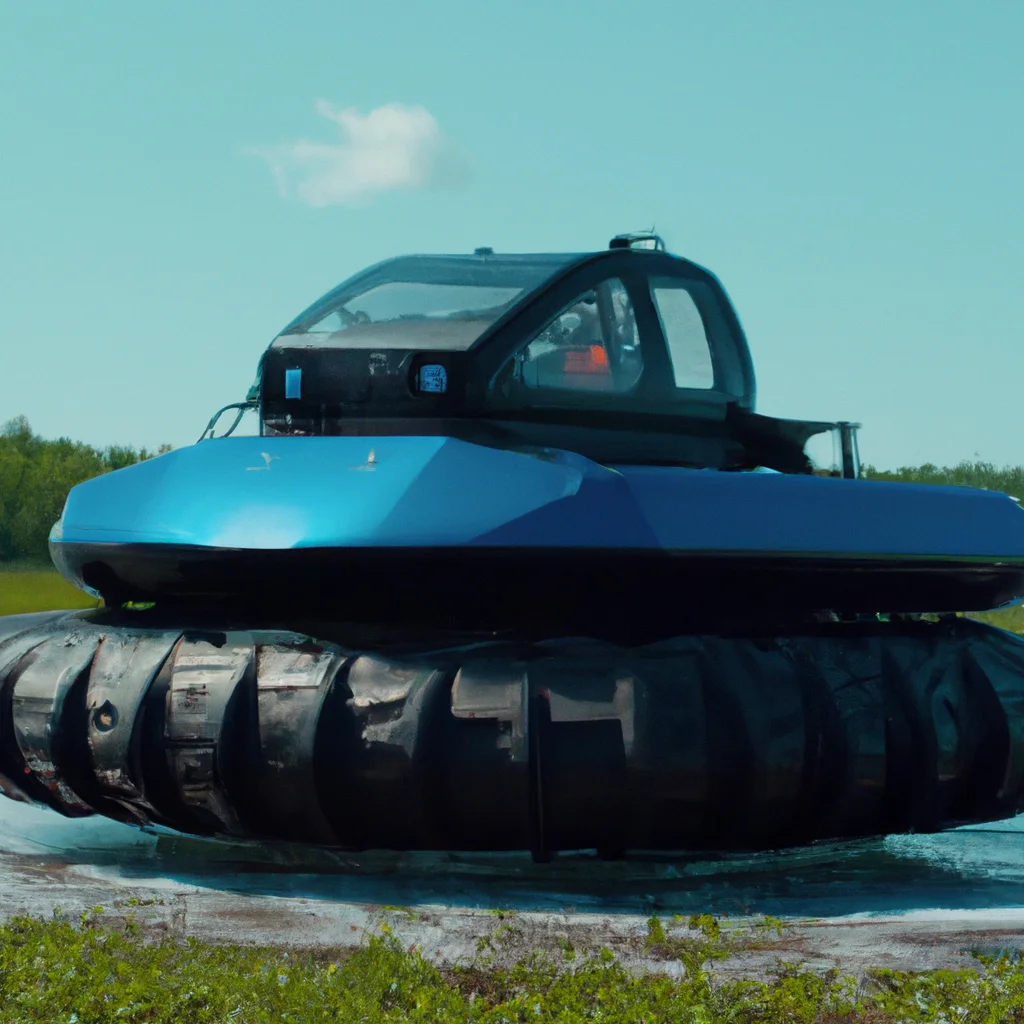How does a hovercraft float above the ground?


How does a hovercraft float above the ground?
Hovercrafts are a fascinating piece of engineering that have captured the imagination of people for decades. They are unique because they can float above the ground, almost as if they are defying gravity. It’s a remarkable sight to see a hovercraft glide over land, water, and even ice. But how do they do it? How does a hovercraft float above the ground? In this article, we’ll explore the mechanics behind the hovercraft and how it stays afloat.
The Basics of a Hovercraft
A hovercraft is essentially a vehicle that is designed to float on an air cushion, rather than wheels or tracks. The air cushion is created by forcing air into the space between the bottom of the vehicle and the ground. This cushion of air is what allows the hovercraft to float, and it is also what allows it to move forward.
The Propulsion System
The propulsion system of a hovercraft is what allows it to move forward or backward. Most hovercrafts use a combination of fans and propellers to create thrust. The fans blow air into the air cushion, while the propellers push the hovercraft forward.
The Lift
The lift is what allows the hovercraft to float above the ground. As mentioned earlier, the air cushion is created by forcing air into the space between the bottom of the hovercraft and the ground. The air cushion creates a low-pressure area, which causes the hovercraft to lift off the ground. This lift is what allows the hovercraft to float above the surface and move forward.
The Skirt
The skirt is a vital component of a hovercraft. It is essentially a flexible skirt that surrounds the bottom of the hovercraft and helps to trap the air inside the cushion. The skirt is usually made of rubber or a similar material and is designed to be flexible and durable. It is also designed to create a seal between the hovercraft and the ground, which helps to maintain the air cushion.
Engineering the Hovercraft
The mechanics behind the hovercraft are complex, and it takes a lot of engineering to design and build one. The shape of the hovercraft is crucial to its performance. The bottom of the hovercraft is usually shaped like a flat plate, and the sides are angled to create a lift. The fans and propellers are also carefully placed to create the right amount of lift and thrust.
The Advantages of a Hovercraft
There are many advantages to using a hovercraft. One of the most significant advantages is that they can travel over a variety of surfaces. They can float over water, ice, and land, which makes them ideal for use in areas where other vehicles would struggle to travel. They are also very fast and can reach speeds of up to 60 miles per hour.
Conclusion
In conclusion, a hovercraft floats above the ground by creating an air cushion between the bottom of the vehicle and the ground. The lift is created by forcing air into the cushion, which creates a low-pressure area and causes the hovercraft to lift off the ground. The propulsion system uses a combination of fans and propellers to create thrust and move the hovercraft forward. The skirt is a flexible component that surrounds the bottom of the hovercraft and helps to trap the air inside the cushion. Engineering plays a significant role in designing and building a hovercraft, and the shape of the vehicle is crucial to its performance. Despite being complex, a hovercraft is a fascinating piece of engineering that has many advantages over other vehicles and is sure to continue to capture the imagination of people for years to come.
Recent Posts
How do I create an engaging and informative online quiz or assessment?
Creating an engaging and informative online quiz or assessment can be a powerful tool for… Read More
What are the most effective methods for managing and reducing work-related stress in the hospitality industry?
Work-related stress is a common issue in the hospitality industry, where employees often face long… Read More
How can I improve my assertiveness and communication skills in a leadership position?
In a leadership position, assertiveness and effective communication skills are crucial for success. Being able… Read More
What are the key elements of a successful employee recognition and rewards program?
Employee recognition and rewards programs play a crucial role in motivating and engaging employees, as… Read More
How do I effectively manage and respond to customer feedback and reviews?
Customer feedback and online reviews play a crucial role in shaping a company's reputation and… Read More
What are the best strategies for effective time management as a stay-at-home parent?
Effective time management is crucial for stay-at-home parents who juggle multiple responsibilities on a daily… Read More